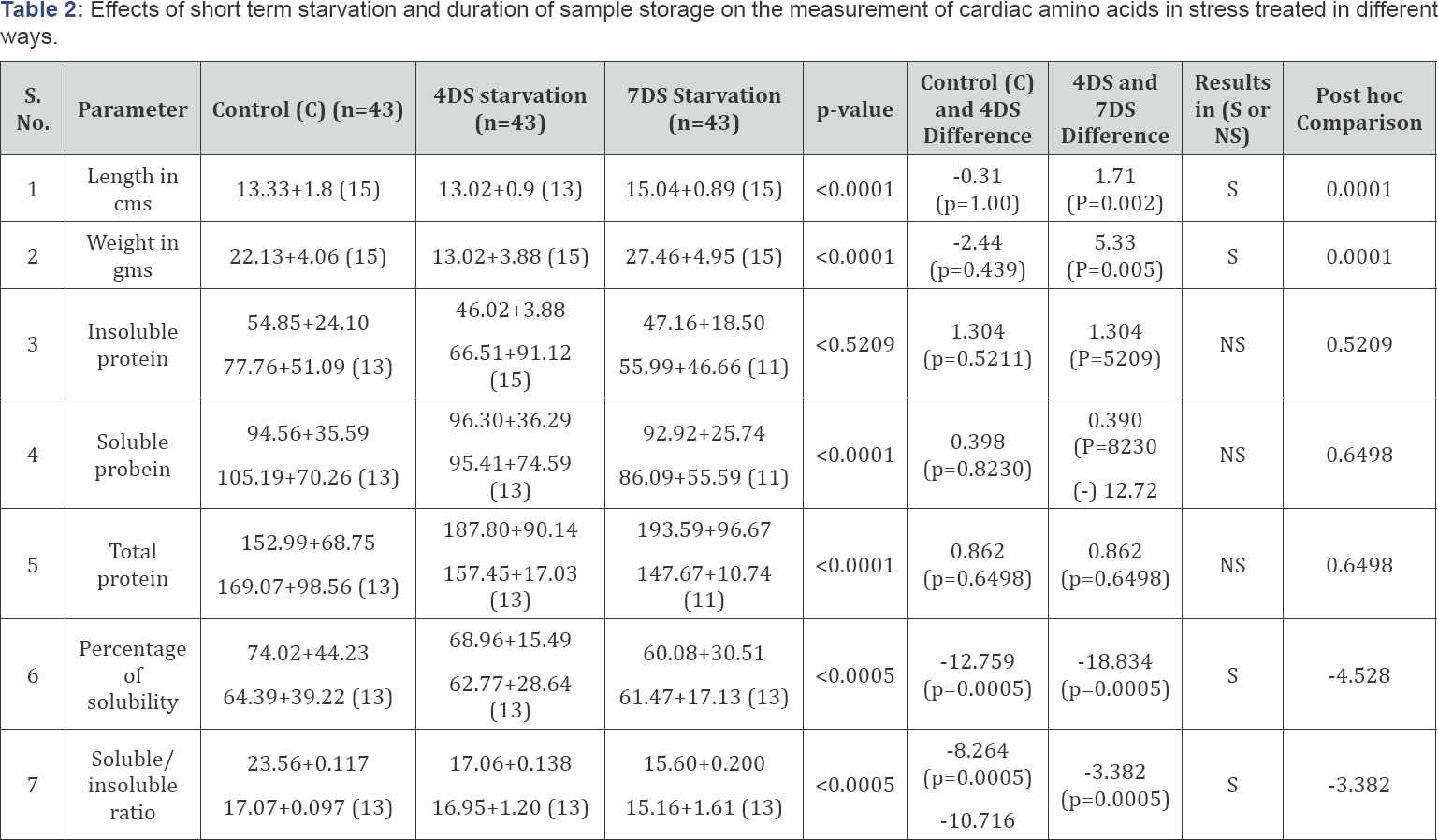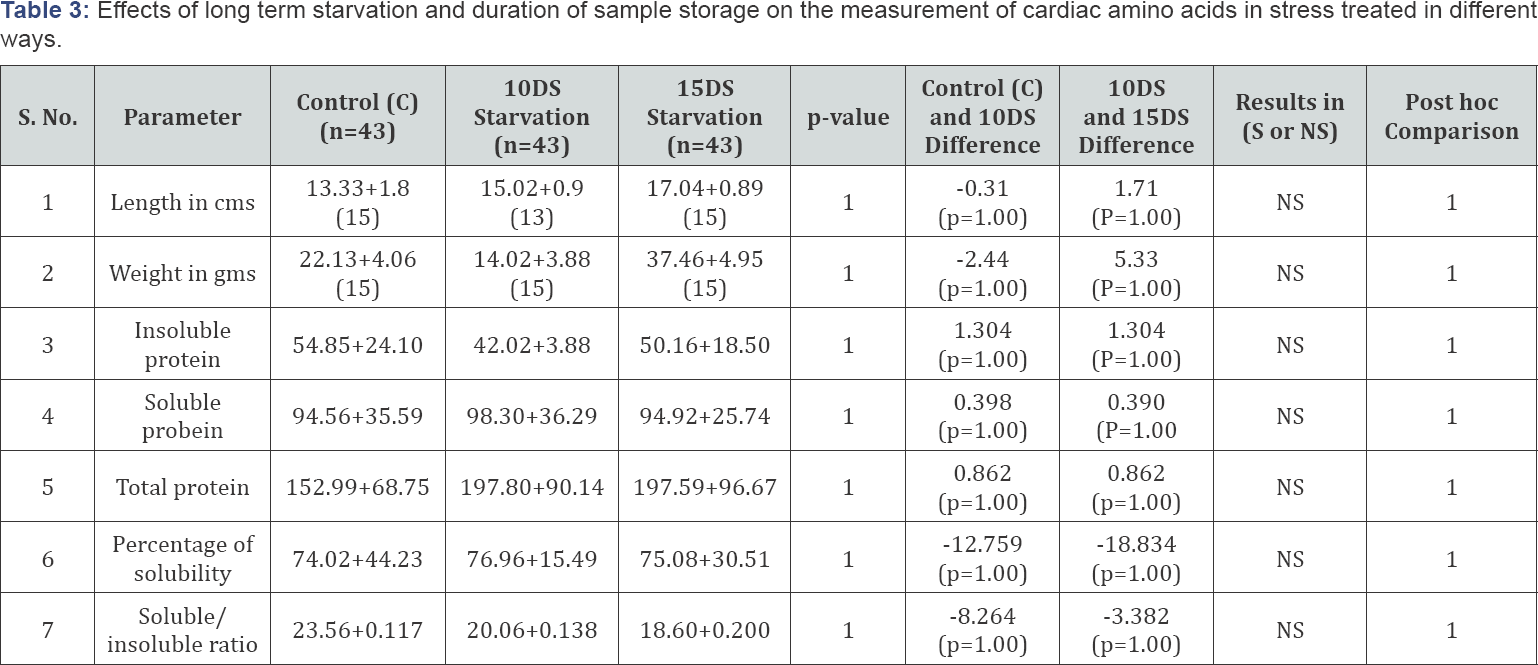Starvation Stress Induced Cardiac Diseases (Ssicds) and Activity of the Hepatic Enzymes: An Innovative Invention through Experimental Conditions
ADVANCED RESEARCH IN GASTROENTEROLOGY & HEPATOLOGY JUNIPER PUBLISHERS
Authored by Mayadhar Barik
Abstract
Introduction: Starvation or semi starvation diets for weight reduction in severely obese people have been reported of sudden death due to ventricular ARGHhythmias (Vas). Obesity is associated with cardiovascular diseases (CAD/CVD) and gastroenterology problem with hepatic disorders. Starvation including with the left ventricular hypertrophy (LVH) with prolongation of the QT interval, weight loss, the mass of the heart and left ventricle (LV) decreases. The exact signs of left ventricular dysfunction (LVD) are remain unclear. Effect of weight loss (EOWL), on the electrocardiogram (ECG) abnormalities of obesity appears to depend upon diet duration and upon whether protein and mineral nutritional status (MNS) is maintained and verified through different aspects of laboratory condition.
Material and methods: We chosen Channa fishes are easily available throughout the year. Cardiac tissues comprises of post mitotic tissues/ cells play a significant role in the organism. Biochemical parameters were chosen for the present study (1) soluble protein, (2) insoluble protein,(3) total protein, (4) percentage solubility of protein and (5) soluble/insoluble protein ratio. Earthen pots labeled as control (C), Experimental 1 (E1) and Experimental 2 (E2) were used. Fish kept in control pot served as control group and those in Experimental-1 served as 4 days starvation (4DS), Experimental-2 labeled as 7 days of starvation (7DS) and comparing with 10 DS and 15 DS. Experimental 3 labeled with food. Qualitative data was compared by applying chi-square test. The quantitative data represented as mean+SD was compared by applying one-way ANOVA followed by post hoc comparison in Bonferonni method. In this article, we evidenced that CR in nonhuman and humans has a positive effect on risk factors for CVD.
Results: While comparing the changes between 4 and 7 days after starvation, comparing with 10 days and 15 days we observed a significant decline in protein fractions in cardiac tissues of both sexes of the murrel in short term (p<0.05). Short term starvation and protein deficiencies may play important roles in promoting an electrically unstable heart. Stress, by eliciting autonomic imbalance, may act upon an electrically unstable heart to provoke acute ARGHhythmias in a subset of the obese population with QT interval prolongation.
Conclusion: CR improves several components of the metabolic syndrome and reducing the risk of CVD and alcoholic related complications (gastroenterology problem with hepatic disorders). Recent data and from this outcome bring out us the lesion that human subject at CR is likely to positive effects in humans healthy subject and alcoholic cardiac patients rather than the other animal model.
Keywords: Starvation; Stress; Cardiac diseases; Experimental conditions; Protein; Mineral nutritional status
Introduction
Presently the major risk factors for CVD/CAD are advancing age, obesity, intervention able to positively impact on both sexes of aging and obesity [1]. As of caloric restriction (CR) prove extremely useful in the fight against CVD [2]. TPC1 and TPC2 transcripts and protein levels paralleled the increase in autophagy identified by increased LC3-II and decreased p62 levels. siRNA depletion [3]. CR with in environmental or lifestyle intervention that has shown to increase the maximum life span and to retard aging in laboratory rodents for CAD/CVD [4]. Starvation-selected lines (SSLs) does not exhibit excessive intracellular lipid deposition (EILD) within the myocardium and stored excess triglycerides in large lipid droplets within the fat body helps obesity-associated heart dysfunction (OAHD) [4]. Older hypothesis was challenged by David Barker who proposed that the intrauterine environment (IUE) influences the risk of non-communicable diseases (NCDs) [5]. MET successfully prevents DOX-induced cardiotoxicity in vivo by inhibiting DOX- induced oxidative stress (DOX-IOS), energy starvation (ES), depletion of intramitochondrial CoA-SH in the cellular level [6].
Material and Methods
Study design
We designed a prospective observational study. The study duration three years to verify the necessary parameters rely on very informative effect through caloric restriction.
Sample collection
Channa fishes are easily available throughout the year. Cardiac muscle and tissues comprise of post mitotic tissues/ cells play a significant role in the organism d including with metabolism part.
Sample processing
Biochemical parameters were chosen for the present study
A. Soluble protein
B. Insoluble protein
C. Total protein
D. Percentage solubility of protein
E. Soluble/insoluble protein ratio. Earthen pots labeled as control (C), Experimental 1 (E1) and Experimental 2 (E2) were used for the study
Sample preservation
Fish kept in control pot served as control group and those in Experimental-1 served as 4 days starvation (4DS), Experimental-2 labeled as 7 days of starvation (7DS) and comparing with 10DS and 15DS. Experimental 3 labeled with food.
Ethical clearance
For this study ethical clearance not required due to always viability of samples.
Statistical Analysis and Utilization
Qualitative data was compared by applying Chisquare test. The quantitative data represented as mean+SD was compared by applying one-way ANOVA followed by post hoc comparison in Bonferonni method.
Results
Effect of 4DS, 7DS, 10DS and 15DS starvation stress on protein fractions of cardiac tissues are with common fresh water teleost fish, C. punctatus revealed the following findings. Data on changes in biochemical constituents have been presented in given below (Table 1-3). These results indicate that the hypertrophied and failing heart shifts to ketone bodies as a significant fuel source for oxidative ATP production. Specific metabolite biosignatures of in vivo cardiac ketonebodies utilization were is identified in proper way.

*Group 1 (Control group-C), Group 2 (3 days starvation-3DS), Group 3 (7 days starvation-7DS), Group 4 (total subject-TS), within sex group there is no significant changes observed.

*Results are expressed in mg/g, tissue wet-weight, mean+SD
*Significantly different (p<0.0005) vs freshly analyzed samples (ANOVA)
*Number in parentheses indicates sample size, NS: Not Significant; S: Significant

*Results are expressed in mg/g, tissue wet-weight, mean+SD
*Significantly different (p<0.0005) vs freshly analyzed samples (ANOVA)
*Number in parentheses indicates sample size, NS: Not Significant; S: Significant
Discussion
Despite of recent advances in therapy the heart failure remains a major cause of mortality and morbidity. It is a growing healthcare burden worldwide. Alterations in myocardial energy substrate metabolism (MESM) are now occupied a hallmark of heart failure with CR improves several components of the metabolic syndrome and reducing the risk of CVD and alcoholic related complications (gastroenterology problem with hepatic disorders). Basically we are associated with an energy deficit (ED) in the failing heart. Metabolic shift mechanism (MSM) from mitochondrial oxidative metabolism (MOM) is the glycolysis had a significant correlation between ATP/ADP ratio and myocardial probucol level. The Cardio protective effect (CPE) of probucol in treatment of HF. An antioxidant properties enhancement of endogenous antioxidant reserve (mainly GPx) responsible for myocardial energy state level (MESL) [7]. Anorexia nervosa (AN) abnormalities of mitral valve motion (MVM) and reduced left ventricular mass (RLVM) associated with systolic dysfunction compared our earlier study [8].
Microsomal drug-metabolizing enzymes (MDMEs) is altered by several pathological or abnormal physiological states, such as changes in nutritional status, liver, heart or kidney diseases, hormonal disturbances, pregnancy, tumour-bearing state, adjuvant arthritis, changes in reticuloendothelial system and environmental factors related to stress, irradiation and heavy metals are the basic causal factors [9]. The activities of other metabolic pathways, such as glucuronidation, sulphate conjugation, acetylation and alcohol oxidation are generally affected to lesser extents (as per findings of the Length in cms and body wt in gms Table 2 & 3). Rats are the most commonly used in drug metabolism studies unlike fish (insoluble, soluble and total protein ratio) known that the activity of most of the microsomal drug-metabolizing enzymes (MDMEs) is more higher in males than in females through androgen action (AA) readily impaired the drug-metabolizing enzymes (DMEs) in male rats. Here we compared manifested by four mechanisms. The one is by impairment of androgen action (IOAA) and the other is by depression of the basic enzyme activity (DOBAA). Third is an effect of pathological states, observed only in male rats but not in females, Forth is generally not seen in other species of animals including with man.
Hence Table 1 we are unable to get significant (Group 1 (Control group-C), Group 2 (3 days starvation-3DS), Group 3 (7 days starvation-7DS), Group 4 (total subject-TS) p-value: 0.92. Whereas the effects of starvation, hyperthyroidism, adrenal insufficiency, and diabetes and morphine administration are cases through DR changes occurred in metabolism are due to impairment of androgen action and pathological causes related to Length in cms, Weight in gms, Insoluble protein, Soluble probein and was observed p-value: 0.0001. Whereas we got the values Total protein Percentage of solubility and Soluble/ insoluble ratios were lesser then p-value: 0.0005. Both attached in Table 2 & 3 as well. Drug-metabolizing enzymes (DMEs) showing sex differences are depressed more markedly in male fishes. Rather than those showing no clear sex difference ocuured in our study We therefore recommend the use of female in the evaluation of the effects of pathological status on hepatic microsomal drug- metabolizing enzymes (HMDMEs) to be look forward in positive direction a home message from our study that animal also comparable unlike rat/fish and human experimentation and the excellence are quite useful [10].
Basic Science to Clinical Application
Generally, changes in activity of the hepatic enzymes reflect closely by the changes in the rates, fish of drug metabolism in vivo [11]. Because the protein-binding of drugs, hepatic blood flow and renal function. We are also known to affect the rate of drug metabolism and excretion in vivo and in vitro effect both [12]. The utility of starvation or semi starvation diets for weight reduction in severely obese people has been the reporting that of sudden death due to ventricular ARGHhythmias (Vas) with alcoholic cardiac patients (ACPs) [13]. Protein and mineral nutritional status (PAMNS) maintained by copper, potassium, lead, and magnesium deficiencies played roles in promoting an electrically unstable heart (EUH) [14]. Starvation stress eliciting autonomic imbalance (SSEAI) due to electrically unstable heart (EUH) to provoke acute ARGHhythmias. [15]. Hypertrophied and failing heart shifts (HTAFHSs) to ketone bodies as a significant fuel source for oxidative ATP production. The Specific metabolite biosignatures of in vivo cardiac ketonebodies utilization were is identified in proper way [16]. Future studies would be aimed at determining whether this fuel shift mechanism (FSM) is an adaptive or maladaptive significance for new therapeutic strategies on heart failure (HF) management of gastroenterological problems and hepatic dysfunction [16].
Conclusion
CR improves several components of the metabolic syndrome and reducing the risk of CVD and alcoholic related complications (gastroenterology problem with hepatic disorders). The lesion that human subject at CR is likely to positive effects in humans healthy subject and alcoholic cardiac patients with (gastroenterology problem with hepatic disorders).
For more articles in Advanced Research in Gastroenterology & Hepatology please click on https://juniperpublishers.com/argh/index.php
For more about Juniper Publishers please click on: https://juniperpublishers.com/video-articles.php




Comments
Post a Comment